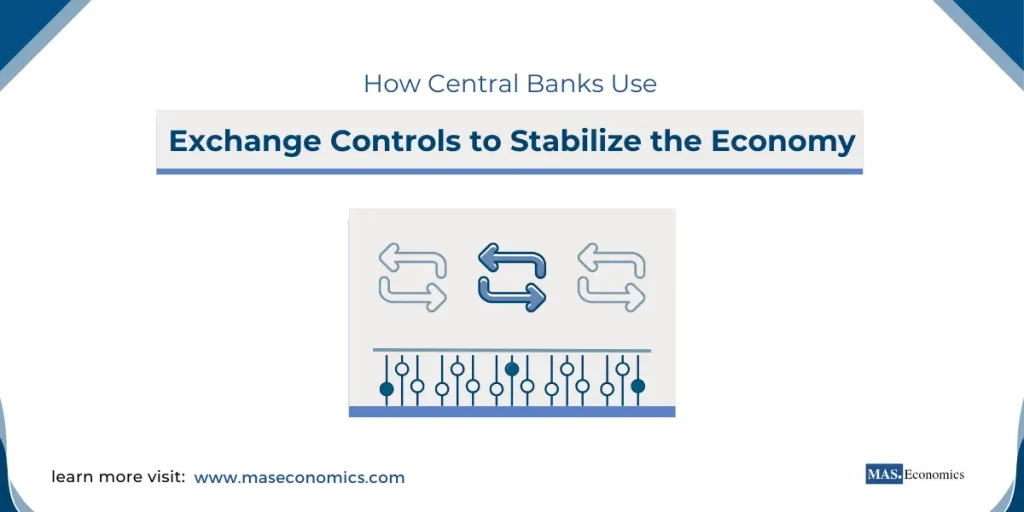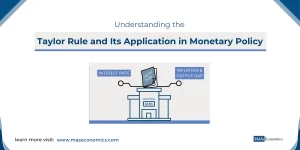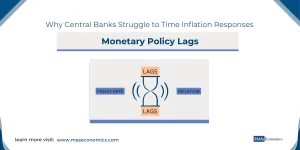Exchange controls are a key tool used by central banks to manage and stabilize the economy. These regulations restrict or manage the flow of foreign currencies into and out of a country, protecting foreign exchange reserves, preventing excessive currency fluctuations, and maintaining economic stability.
Exchange controls influence the economy by managing how they work, why central banks implement them, and how they have been applied historically, especially during periods of economic volatility.
What Are Exchange Controls?
Exchange controls are regulations that central banks or governments impose to limit the buying, selling, or transferring of foreign currencies. These restrictions can take many forms, such as limitations on the amount of foreign currency an individual can purchase, rules governing the exchange rate, or even bans on certain types of foreign transactions. The primary purpose of exchange controls is to protect the domestic economy from the risks associated with volatile capital flows and to conserve foreign exchange reserves.
Goals of Exchange Controls
The objectives of exchange controls include:
Maintaining Currency Stability
By controlling capital outflows, exchange controls help maintain the value of the national currency, especially in situations where depreciation pressure is high.
Conserving Foreign Reserves
In countries with limited foreign exchange reserves, exchange controls ensure that foreign currency is used only for essential imports and not wasted on less critical activities.
Avoiding Balance of Payments Issues
Exchange controls help manage a country’s balance of payments by regulating foreign currency demand, especially during times of economic distress when reserves may be dwindling.
Exchange controls are often seen in developing economies or in countries undergoing severe economic shocks. They provide a way to shield the domestic economy from the adverse effects of capital flight and currency speculation.
How Central Banks Administer Exchange Controls
Delegation to Authorized Dealers
Typically, central banks delegate the administration of exchange controls to authorized dealers, which are usually major commercial banks. These banks act on behalf of the central bank, ensuring that foreign exchange is managed in accordance with government regulations.
The authorized dealers operate under specific conditions and limits prescribed by the central bank. For example, they may be restricted in terms of how much foreign currency they can provide for specific types of transactions, such as travel, remittances, or international investments.
Regulatory Mechanisms
Central banks use a variety of mechanisms to implement exchange controls effectively:
Fixed Exchange Rates
Under certain regimes, central banks may set an official exchange rate that is different from the market rate. This helps maintain control over the value of the currency.
Limits on Foreign Exchange Transactions
Individuals and businesses may face restrictions on how much foreign currency they can buy or transfer. This helps control the outflow of foreign reserves.
Prioritization of Foreign Currency Allocation
Central banks may give priority to specific sectors, such as essential imports like food and fuel, ensuring that scarce foreign exchange is used effectively.
These mechanisms are designed to curb excessive outflows of foreign currency and protect the domestic economy from volatile international markets.
Historical Examples of Exchange Controls
The Case of Argentina
Argentina provides a well-known example of the use of exchange controls. During the 2001 economic crisis, the government implemented a range of exchange controls to limit the outflow of foreign currency. These included restrictions on buying foreign currency, limits on international transfers, and the imposition of multiple exchange rates.
While these measures were successful in slowing capital flight temporarily, they also created a number of unintended consequences:
- Black Market Emergence: The gap between the official exchange rate and the rate at which people could actually exchange money led to the development of a thriving black market.
- Economic Disruption: The restrictions created significant distortions in the economy, reducing investor confidence and ultimately leading to a deeper recession.
Argentina’s experience highlights both the effectiveness and the risks associated with exchange controls. While they can provide short-term relief, they also carry significant long-term costs if mismanaged.
China
China has long employed exchange controls as part of its broader economic strategy. By tightly managing its currency, the Renminbi (RMB), the Chinese central bank has been able to control the flow of foreign capital and maintain economic stability.
- Managed Convertibility: China restricts the free convertibility of the RMB for capital account transactions while allowing more freedom for current account transactions, such as trade in goods and services.
- Impact on Economic Stability: These controls have allowed China to avoid the extreme currency volatility that other emerging markets often face. By maintaining a stable exchange rate, the central bank has helped foster an environment conducive to long-term economic planning and investment.
China’s careful administration of exchange controls provides an example of how such tools can be used effectively to maintain stability and control over economic outcomes.
Effectiveness of Exchange Controls
Benefits of Exchange Controls
Protection from Speculative Attacks
By restricting capital outflows, exchange controls can prevent sudden, speculative movements of money that could destabilize the currency.
Ensuring Liquidity for Essential Needs
Exchange controls can help ensure that foreign reserves are used for critical imports like food and energy, preventing a country from running out of essential goods.
Reducing Capital Flight
In times of political or economic instability, exchange controls can help reduce capital flight, thus maintaining a stable domestic financial system.
Downsides of Exchange Controls
Black Market Creation
When there are severe restrictions on foreign exchange, a black market often develops. This unofficial market usually operates at rates much higher than the official rate, creating a parallel, unregulated economy.
Negative Impact on Investment
Exchange controls can deter foreign direct investment. Investors may shy away from a country if they know they cannot freely convert and repatriate their profits.
Administrative Burden
The implementation and management of exchange controls create additional work for both the central bank and authorized dealers, often leading to inefficiencies and potential avenues for corruption.
Are Exchange Controls Still Relevant Today?
Exchange controls have evolved over time, and while their use has declined in many developed economies, they are still relevant, particularly in emerging markets. Central banks deploy them in scenarios where there is:
- Severe Economic Stress: Countries undergoing significant political or economic crises often use exchange controls to preserve stability.
- Protection of Nascent Financial Markets: Emerging economies use exchange controls to protect young financial markets from volatility and speculative attacks until they are more resilient.
The COVID-19 pandemic led to a resurgence of exchange controls in several economies as countries sought to protect their foreign reserves amid declining export revenues and increased health expenditures.
Modern Perspectives on Exchange Controls
In today’s globalized economy, the imposition of exchange controls is often seen as a last resort—something that can stabilize an economy in the short term but may hinder long-term growth. The availability of foreign capital is critical for development, and restrictive exchange controls can discourage both foreign direct investment and portfolio investment.
However, when implemented judiciously and for a limited duration, exchange controls can provide the breathing room necessary for structural economic reforms. The key lies in maintaining a balance—employing these tools to prevent instability while minimizing negative impacts on investor confidence and market functioning.
Conclusion
Exchange controls are a complex but powerful tool in the arsenal of central banks. They help maintain currency stability, protect foreign reserves, and prevent economic shocks. Historical experiences, from Argentina’s mixed results to China’s strategic control, show that these measures can be effective under the right circumstances, but they also carry risks and trade-offs.
Central banks must carefully balance the need for stability with the risks of market distortion and investor discontent. In a world of ongoing challenges like pandemics, geopolitical tensions, and financial crises, exchange controls will continue to be an important—albeit controversial—tool for managing economic stability.
FAQs:
What are exchange controls?
Exchange controls are regulations imposed by central banks or governments to limit or manage the flow of foreign currencies in and out of a country. These controls help protect a country’s foreign reserves, stabilize the currency, and manage economic risks associated with volatile capital flows.
Why do central banks use exchange controls?
Central banks use exchange controls to maintain currency stability, conserve foreign reserves, and prevent balance of payments issues. They help shield the economy from capital flight, speculative attacks, and the impact of external economic shocks.
How are exchange controls administered?
Exchange controls are often administered through authorized dealers, typically commercial banks, which operate under central bank guidelines. Central banks may set fixed exchange rates, impose limits on foreign currency transactions, or prioritize essential imports, ensuring efficient use of foreign reserves.
Can you give examples of countries that have used exchange controls?
Argentina and China are notable examples. Argentina implemented exchange controls during its 2001 crisis to limit capital outflows, though this led to a black market and economic disruptions. China uses managed convertibility of the Renminbi to control capital flows, which helps stabilize its economy and avoid extreme currency volatility.
What are the benefits of exchange controls?
Exchange controls can protect a country from speculative attacks, ensure foreign reserves are available for essential imports, and reduce capital flight during times of instability. They provide a way to stabilize the economy when facing internal or external economic pressures.
What are some downsides to implementing exchange controls?
Exchange controls can lead to the creation of black markets, deter foreign investment, and impose an administrative burden on both central banks and businesses. Severe restrictions may also distort the economy and reduce investor confidence.
Are exchange controls still relevant today?
Yes, especially in emerging markets or during times of severe economic stress. For example, countries facing political instability or economic crises may use exchange controls to stabilize their currencies. While they are less common in developed economies, exchange controls remain a viable tool for managing short-term economic volatility.
Thanks for reading! Share this with friends and spread the knowledge if you found it helpful.
Happy learning with MASEconomics




